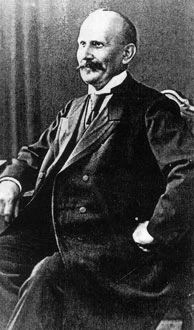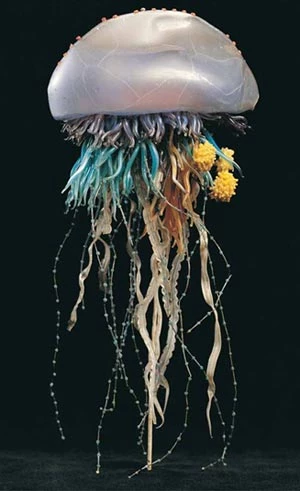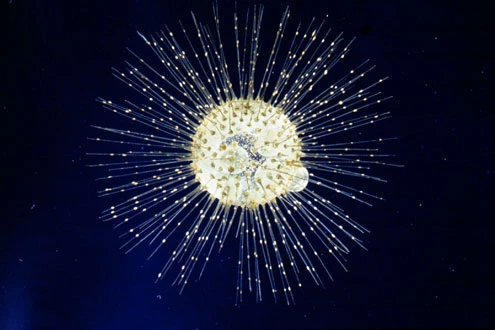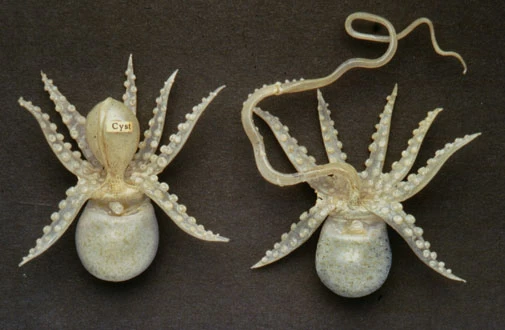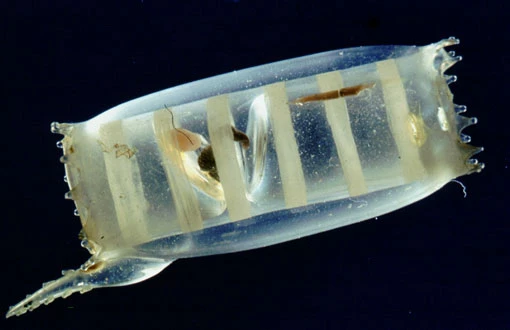Spectacular glass sea creatures of the deep
Rudolf Blaschka c 1913. Image courtesy of the Botanical Museum, Harvard University, Cambridge, MA.
A colourful model of the Portuguese Man-of-War sea creature - Physalia arethusa.
Amgueddfa Cymru holds a remarkable collection of beautifully detailed glass models of sea creatures made, in the latter half of the 19th century, by the uniquely skilled glass-worker and naturalist Leopold Blaschka.
Plants and animals for new museums
The second half of the 19th century was a time of great scientific discovery. New museums were opening to the public with their galleries displaying plants and animals from across the globe. For many groups of animals this was easily done. Birds, mammals, reptiles and even fish could be skinned and mounted to produce lifelike representations.
But what about soft-bodied animals, such as jellyfish and sea anemones, which were preserved in spirit? Their colours quickly faded and their shapes became distorted. The German glass-worker and naturalist Leopold Blaschka devised a solution to this problem. Together with his son, Rudolf, he established a successful business supplying glass models, mostly of marine animals, to museums worldwide during the latter half of the 19th century.
Leopold Blaschka
Leopold Blaschka was born in 1822 in Bohemia, now the Czech Republic. The Blaschka family, originally from Venice, were skilled workers in decorative glass, and Leopold showed artistic skill from an early age. Soon after leaving school, he joined his fathers' business crafting ornaments from metal and glass.
Leopold experimented with making glass models of flowers. Later, in 1863, he made models of sea-anemones which were exhibited in the Dresden Museum, Germany. These attracted the attention of curators of natural history museums who ordered sets of anemone models. Soon Leopold added models of jellyfish and snails to his repertoire. His son Rudolf was by this time working with him.
The Blaschkas were keen to keep up with the demand from museums. An early catalogue dating from 1871 listed nearly three hundred models. By 1888 the catalogue published by Henry Ward, their American agent, listed seven hundred!
The Blaschkas relied on illustrations in books as sources of reference for the glass animals. Many of the models are three dimensional representations of animals that they never saw in reality. However, in later years they increasingly based models on observations of real animals, either during field trips or from live specimens in specially built aquariums in their house.
Their early work was described in their catalogues as 'decoration for elegant rooms'. Comparison between early and later models made in the 1880s shows a distinct tendency towards scientific accuracy and away from the more showy earlier style.
Complex structures
The models varied greatly in complexity and their construction. Component parts were made from both clear and coloured glass, using a combination of glass blowing and lamp working techniques. Other materials were also used where appropriate. Fine copper wires reinforced or attached delicate tentacles and gills, and painted paper cleverly represented internal structures. They also made use of the actual shells of snails to which the modelled glass bodies of the animals were attached.
Production of the glass animals ended in 1890 when they were offered an exclusive contract to supply plant models for the Botanical Museum of Harvard University in the United States.
Leopold died in 1895, at the age of seventy-three. Rudolf continued working single-handedly until he retired in 1936. He died three years later at the age of eighty-two. By that time their collection consisted of 847 life-sized model plants and over 3,000 enlarged flowers and anatomical sections.
Their plant models remain on display at Harvard University to this day, attracting over 100,000 visitors annually.
The Glass model collection held at Amgueddfa Cymru were acquired in two batches. One hundred and thirty eight models were purchased from the Blaschkas by the old Cardiff City Museum in 1890. A further sixty two models came to the museum in 1927 from the Science Museum in South Kensington, London. Examples range from the early 'showy' forms, to more scientifically accurate examples of jellyfish and sea anemonies.
View a selection of these remarkable glass models held at Amgueddfa Cymru